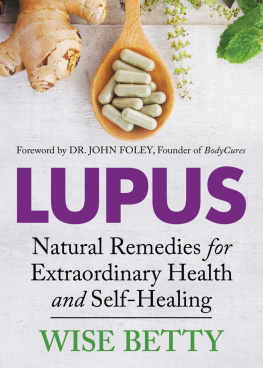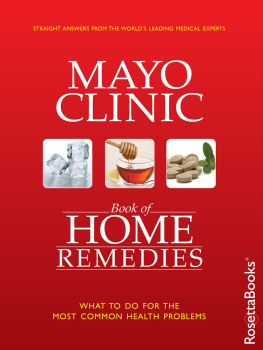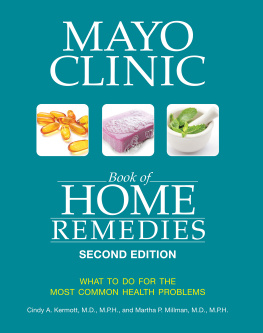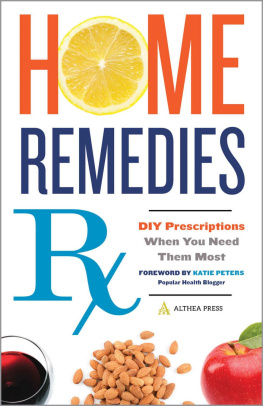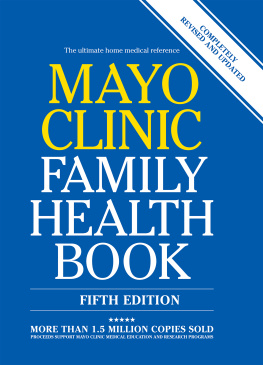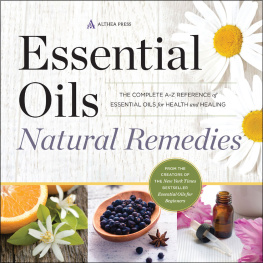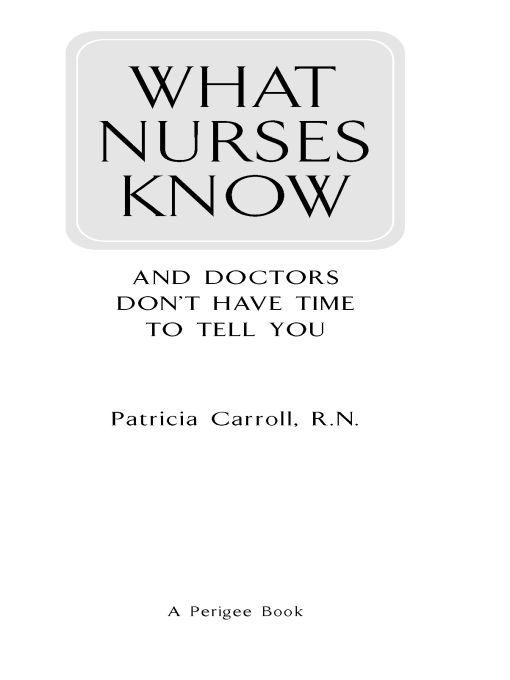Table of Contents
ACKNOWLEDGMENTS
Any serious writer will tell you that while one name may appear on the cover, an extended family shares in shaping the book before we send it off on its own and into your hands. Its not often that you get to hold a dream in your hand, but this book is a dream that started when I was in the first grade and would get my friends together to write and illustrate our own little books; it has now grown into a book that I hope will help far more people than I could ever personally care for as a bedside nurse.
John Duff, my publisher, understood from the very beginning that a registered nurse had a unique perspective on health and a wealth of practical knowledge to share. He has the patience of Job, and I could not ask for more from a publisher. I tell Katie McHugh, who edited this manuscript, that I owe her forever for her incredibly skilled work on this project and for providing the critically important feedback that made this book so much better because of her thoughtful contributions and suggestions. (Writers tend to be terrified of editors because we dont know if they will understand our point of view and keep our quirky personalities in our works. Katie got it in spades. Whew!)
To my non-nurse friends and professional colleagues who have taught me so much and supported me in so many ways over the years: Carl Wiezalis, Karen Milikowski, David Howell, Beth Richards, Jeff McGill, Steve Herweck, Glenn Hawkes, Jeff Mac-Donald, Judy Linn, Denise Dickerson, Deepu Advani, Marcia Proto, Louis Blumenfeld, Anthony DeWitt, Sandi Gangell, Harriet Unger, and Elaine Lisitano.
To the doctors who somehow found the time to tell me things and helped me learn: Thomas Manger, who gave the manuscript two thumbs up and wants all of his patients to read it; Eric Silver stein, who keeps me on my toes; Matthew Saidel, who I took a chance on when he started private practice and am still with him more than twenty years later; Steve Balloch, who makes me smile; Mark OMalley, who keeps me in line; and the late Bruce Farrell, who taught me that sometimes its best when a suffering patient dies.
And, to the men and women who have walked in the same white shoes that I have, and know things that only nurses know, and have always been so generous in sharing their time and knowledge with me: Barbara Acello, Norma Amsterdam, Cynthia Bautista, Ellen Boyda, Linda Carl, Tracy Evans, Pat Greenberg, Wendie Howland, Suzanne Hall Johnson, Vincent Maher, Richard Nadan, Leslie Nicoll, Sarah Perry, Regina Pilatti, Linda Smith, Gail Talbott, Wil son Tay, Clare Thompson, Diane Wadsworth, Nancy Zeidel, and the nurse who I think is the sister I never had, Teri Mills.
And finally, to the help from Kirby, Mel, and Paulieyou know who you are.
DEDICATION
This is for my husband. When we shared our vows in 1984, I had no idea how much he really meant the parts that said,... for worse,... for poorer,... for sickness,... and to love, honor, and cherish. This book simply wouldnt have happened without his unconditional support. I am truly blessed to have someone who shares my dreams, celebrates my joys, and cushions my pain.
When we met, I was still in nursing school. He had some idea what he was getting himself into, but neither of us realized our path would lead us to doing the volunteer work necessary to establish a free health clinic that started as one for the homeless, and with the growing health care crisis has grown to include anyone in our community who needs health care and cant afford it. His willingness to learn about nursing, help out when we need it, and his generosity and genuine respect for the people we serve is an inspiration to everyone he works with.
What this nurse knows is that she couldnt have done it (any of it) alone.
INTRODUCTION
Welcome to my worldthe world of the nurse. Nurses have a different perspective on providing care compared with physicians, and it starts with the definition of our professions. Physicians diagnose and treat illness. Nurses, on the other hand, diagnose and treat the human response to illness. From day one, a physicians education is focused on the disease, illness, or injury, while a nurses education is focused on how that same disease, illness, or injury affects the person.
That doesnt mean this book is anti-physician or that I dont like physicians! I work with them almost every day, and we are all members of a team whose ultimate interest is the best care for the patient. Professionally, we come from different perspectives, thats all.
With that philosophy in mind, this book is different from other self-care or medical advisor books. Instead of organizing things by diagnosis (so the book is hard to use unless you can diagnose yourself correctly first), Ill discuss signs and symptoms in relation to how you feel, and what you can do to feel better. That also means no laundry lists of tests that may or may not be done because each person should be treated as an individual, based on his or her unique signs, symptoms, and health history. I also wont take a lot of time explaining all the structures and functions of your body; there are plenty of resources out there if you want to learn that. Where needed, Ill fill you in to enhance your understanding.
If you do have something serious such as a brain tumor or cancer, thats the kind of situation in which your doctor will have time to tell you about it. Self-care is not the place to start! So this book covers the basicsthe most common conditions. Ill never forget the first doctor who took time to explain things to me when I was a student, and got a kick out of my Gee whiz! enthusiasm. His name was Dr. Bruce Farrell, and he taught me one of the rules of medicine you never want to forget: If you hear hoof beats, look for horses, not zebras. As a nursing student or instructor, were so busy teaching or studying and learning about rare and exotic conditions that we think theyre everywhere. More often than not, the cause is much more common and benign. In this book, well cover horses, not zebras.
That said, and to keep the book from being thousands of pages long, I have taken some shortcuts.
Call the doctor, or Talk to your doctor. I am on a campaign to change this mind-set. I prefer Call your health care provider, or Talk to your health care provider. Today and for the foreseeable future, primary care will no be provided exclusively by physicians. Nurse practitioners and physician assistants are playing a greater role in health care. So, in this book, unless there is a discussion that specifically needs to be addressed by a physician, youll see the letters HCP for health care provider and PCP for primary care practitioner. That means the professional practitioner you see for your regular primary carephysician or not.
I use call 911 as shorthand for call your local emergency rescue services. If your community does not have a 911 system, follow local instructions for how to summon an ambulance (and be sure those instructions are on every phone in your house).
Another abbreviation I use is OTC for over-the-counter medicines you can buy without a prescription.
Other important information youll need to know includes:
Recommendations in this book are for healthy adults. They do not necessarily apply to children under the age of about 16. If you have a chronic illness such as diabetes or asthma or HIV, you may need to follow different instructions for care. If you have any question about how your preexisting condition or medicines you take every day might affect one of the topics covered in this book, check with your HCP.



